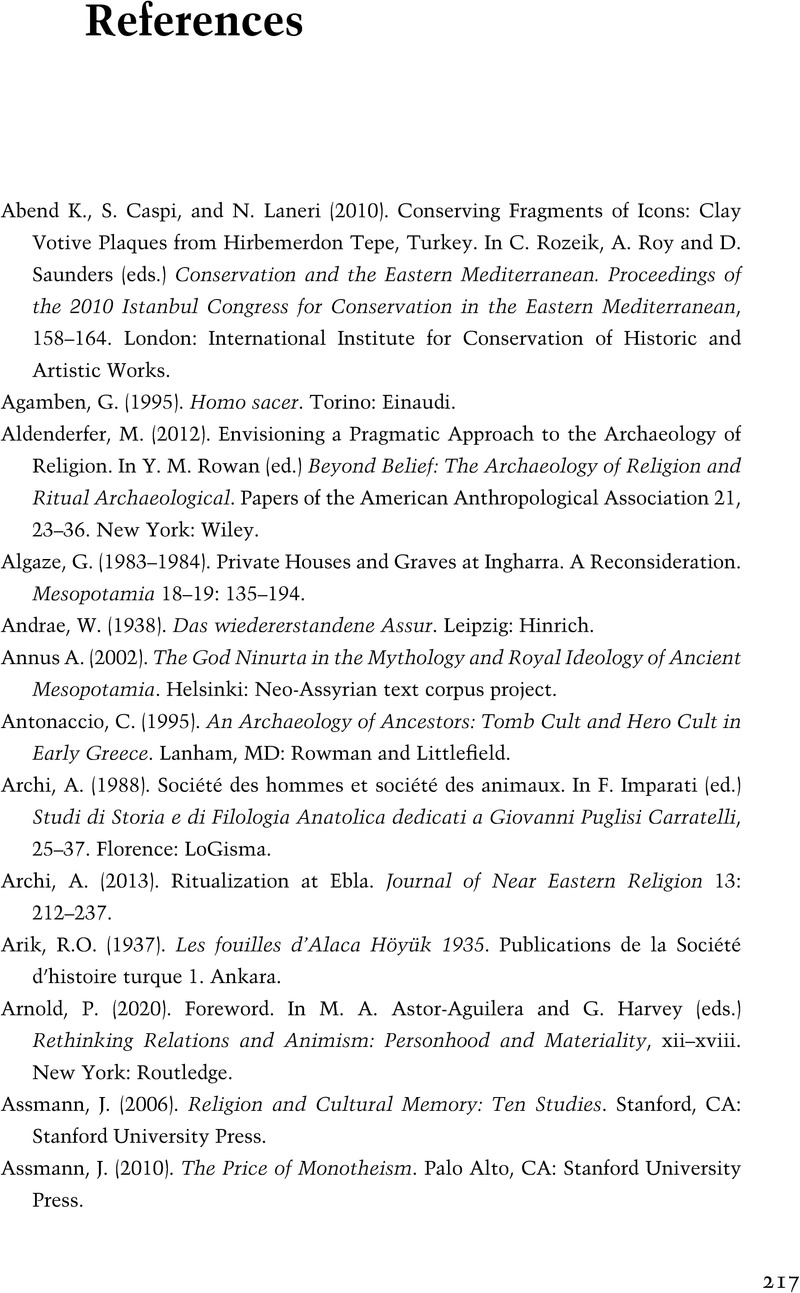Book contents
- From Ritual to God in the Ancient Near East
- From Ritual to God in the Ancient Near East
- Copyright page
- Dedication
- Contents
- Preface
- Acknowledgments
- Introduction: Interpreting Religious Materiality in the Ancient Near East
- Part I In the Name of the Spirits
- Part II For the Glory of the Gods
- Part III A New Era
- Conclusions
- References
- Index
- References
References
Published online by Cambridge University Press: 03 May 2024
- From Ritual to God in the Ancient Near East
- From Ritual to God in the Ancient Near East
- Copyright page
- Dedication
- Contents
- Preface
- Acknowledgments
- Introduction: Interpreting Religious Materiality in the Ancient Near East
- Part I In the Name of the Spirits
- Part II For the Glory of the Gods
- Part III A New Era
- Conclusions
- References
- Index
- References
Summary

- Type
- Chapter
- Information
- From Ritual to God in the Ancient Near EastTracing the Origins of Religion, pp. 217 - 242Publisher: Cambridge University PressPrint publication year: 2024



